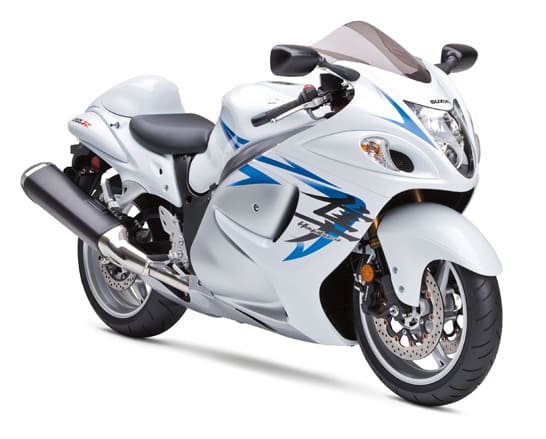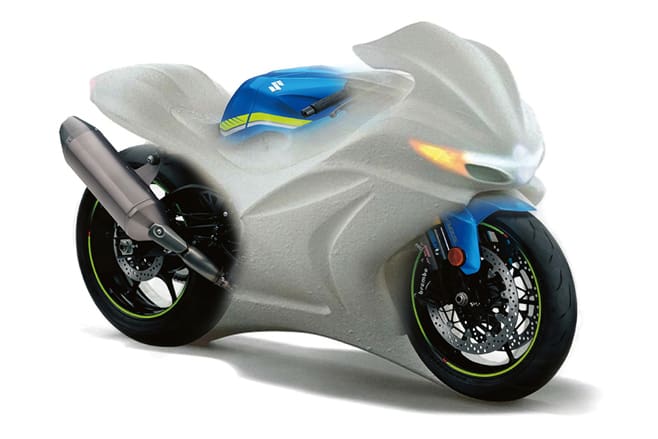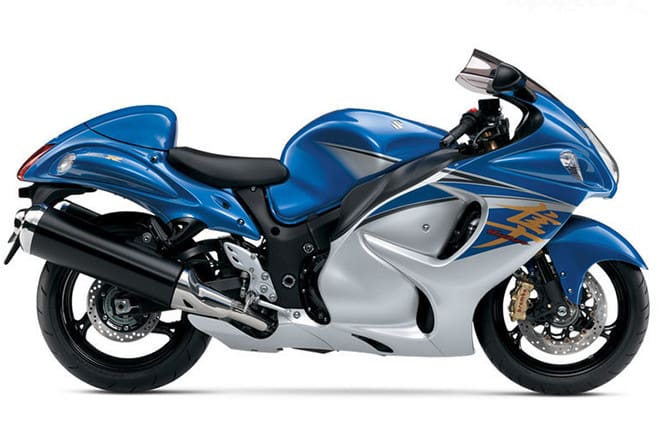A combination of incredible power and cutting-edge aerodynamics meant it was the fastest production motorcycle the world had ever seen.
It sparked the bitter battle for top-speed supremacy that eventually ended in a manufacturers’ agreement not to make bikes that exceed 300km/h (early Hayabusas did 312km/h), and as such the ’Busa left an indelible mark on motorcycling history.
But that all dates back to the turn of the millennium, and there are licence holders today who were barely born when the Hayabusa was launched in 1999, let alone able to remember its impact. And while 129kW power output from 1300cc was jaw-dropping in 1999 when the market-leading superbikes struggled to make 100kW, it was soon overhauled by 1000cc superbikes.

2009 Hayabusa
A revamp in 2008, upping power to 145kW and capacity to 1340cc, left the essence of the bike unchanged, refining rather than redefining the design. While tweaks since have added ABS, today’s Hayabusa still shares many components with the 1999 original motorcycle.
By the end of this year the Hayabusa will have been in production for 18 years, nine in its first-gen form and nine after the revamp. Even if there was no other evidence, logic would suggest that a new model is due in 2017. But there is other evidence.
One major driving force behind a whole raft of new models for 2016 and 2017 is the stepped introduction of new type-approval regulations in Europe which include tougher Euro4 emissions rules.
The current Hayabusa doesn’t meet the new emissions limits. Under the Euro rules, its existing type-approval – the documentation that makes it legal to sell in Europe – expires on 31 December 2016, after which it’s theoretically illegal to be sold as a new bike in European countries. There’s some leeway, though…read on.

Suzuki has two options. One would be to clean up the existing engine, undergo new type approval and continue to sell it. But given that reducing the emissions is likely to mean a reduction in power – the ’Busa’s raison d’etre – that is unlikely.
What’s almost certain instead is the Concept GSX sculpture revealed at last year’s Tokyo Motor Show will become the first entirely new Hayabusa since the bike’s 1999 introduction.
Why it won’t be turbocharged
The mixed messages sent at the Tokyo Show, where the Concept GSX was revealed alongside the new turbocharged parallel twin engine that will power a forthcoming production derivative of the 2013 Recursion concept, have led some to suggest the new ’Busa will also be turbocharged.
But we don’t think so. Suzuki’s turbo technology is to be wheeled out on a smaller capacity twin using the engine shown at Tokyo, and until the firm is convinced that customers are going to be converts to forced induction, it’s unlikely to risk it on a major model like the ’Busa.
Instead the probability is that the new Hayabusa will follow the original’s formula: a large-capacity, high-powered engine in a capable chassis with supreme aerodynamics.
While modern engine technology means that matching the current model’s 145kW would be easy, even with the pressure of tougher emissions rules, a hike in capacity is likely. As well as giving the bike the sort of easy 150kW-plus that’s really needed to retain the Hayabusa’s position in the market, it would ensure even more torque to set it aside from increasingly powerful, high-revving 1000cc superbikes.
A larger capacity engine in a relatively sensible state of tune will be attractive to riders who see the stock power as merely a starting point. While there are plenty of superbikes that can match a standard ’Busa for power and straight-line performance today, they’re much harder to tune to the ridiculous levels the Hayabusa just takes in its stride.

2003 Hayabusa
Why it looks like that
While it was only a paper sculpture, the Concept GSX has largely given away the game when it comes to the next Hayabusa’s styling. The key cues are all there: twin air intakes flanked by integrated indicators, a central ‘stacked’ headlight with wing-like extensions either side, a curvaceous seat unit with faired-in indicators at the back.
It screams Hayabusa. Even the twin ribs running up the screen are a clear development of the existing bike’s styling. The dual exhausts are also a key element – the Japanese market in particular still regards twin exhaust pipes, the larger the better, as a clear indication of power. The Concept GSX even shows the outline of a well-stocked dash, with five large, round instruments, that’s perfectly in line with the Hayabusa’s.

2015 Hayabusa
Why it might be late
While the Busa’s type-approval will expire at the end of this year, there’s a chance Suzuki will be able to gain an extension. But while there are provisions for an extension of up to two years, they’re not a carte blanche to simply keep old, non-compliant bikes on sale. Manufacturers need to apply for an extension in each country where they want to sell non-conforming bikes, and then there are strict rules that say that sales can’t exceed 10 percent of the sales in the previous two-year period, or a maximum of 100 bikes, whichever is higher. Individual European governments also decide on a case-by-case basis whether to grant extensions.
Does all this Euro regulation stuff matter outside Europe? Given European sales are a key part of the cost-analysis of bikes, the answer is a definite yes. There might be scope to offload excess stock of non-compliant bikes into non-Euro markets come 2017, but the development of clean, compliant models is the only viable long-term strategy.











